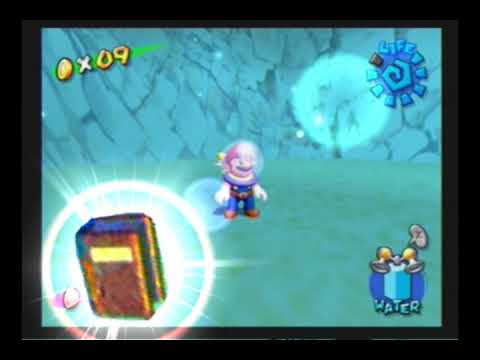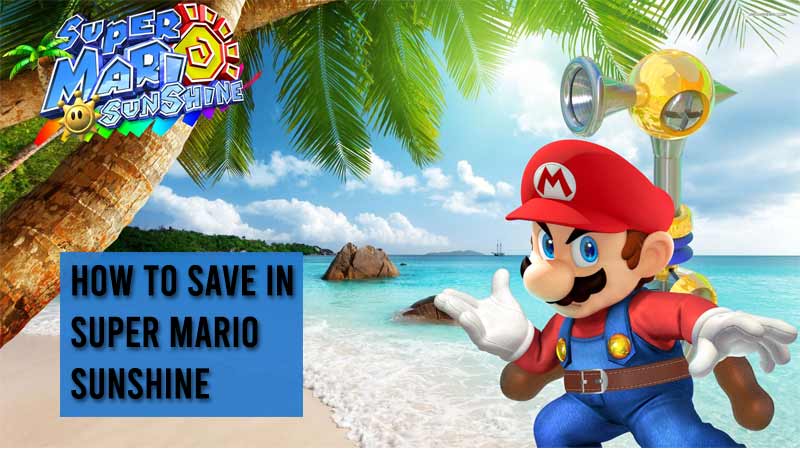



Much of the level and objective design revolves around spraying things with the water pack and collecting things. The biggest problem I have with the gameplay is the over-reliance on the water pack and lack of true platforming like you’d find in other Mario games.

While the setting certainly gets tired as the game progresses, most people come to Mario games for the gameplay, and that is another area where Mario Sunshine falls a bit short of other games in the series, though it is still solid in this regard. If you look at pretty much any other Mario game, you can count on going to all manner of unique and different environments, but Super Mario Sunshine is limited entirely to a tropical setting. Each of these levels has some aspect to set them apart, but they are all tropical and mostly look very similar. Of the 7 main levels, there are two beaches, two villages, a harbor, a bay, and the most unique setting in the game, an amusement park. The result is distinct lack of location variety across all of the levels. Unlike other Mario games which send you off to wide variety of themed levels, Super Mario Sunshine is set entirely on a single tropical island called Isle Delfino. That feeling of repetition isn’t just because of the overuse of coin collecting objectives, but also because of the levels themselves. Compared to the Galaxy games, which feature very little repeating objectives, very few coin collecting stars, and only a handful of stars per level, Mario Sunshine has a much greater degree of repetition. This means that every level in the game has twelve shines with either five or six of them being related to coin collecting. Also, each level has 30 blue coins, with a shine being awarded every 10 coins. Like Mario 64, every level in Mario Sunshine has a 100 coin shine and a red coin shine, but several levels have two red coins shines. Mario 64 did suffer a bit from having some of the same objectives on each level, specifically the fact that every level had a 100 coin star as well as a red coin star, but Mario Sunshine goes way further. One of the biggest shortcomings of the game is how much it repeats objectives. Now, having fewer levels with more objectives per level isn’t an inherently bad thing, but Mario Sunshine falls short of the other 3D Mario games in large part due to the objective variety. Super Mario Sunshine doesn’t come close to the level variety present in the other star collection based 3D Mario games, with only 7 levels in the entire game, each having eight main shine sprites and several additional ones as well. Super Mario Galaxy 2 went even further with the level variety, sporting a total of 49 levels with between one and three stars per level. Super Mario Galaxy features 15 main levels with six stars each to go along with 27 additional levels which have one or two stars per level for a total of 42 different levels. Super Mario 64 features 15 levels which each have six main stars and a 100 coin star per level to go along with 6 secret single star areas for a total of 21 levels. The game follows the same basic formula established in Super Mario 64 and continued in the two Galaxy games, and one of most obvious areas that Mario Sunshine is inferior to the other star collection games is the level and objective variety. Looking at the many aspects of Super Mario Sunshine compared to the other 3D Mario games, it’s clear that it comes up short in a lot of ways. Now, there is a lot to really appreciate about Super Mario Sunshine, but first let’s look at the reasons why it’s widely considered the worst 3D Mario game. Of those nine games, Super Mario Sunshine stands apart as the most unique entry in the series, but it has also received a reputation as the black sheep of the franchise. games, but the nine main console installments are what most people think of when it comes to the true Super Mario games. There are other Mario platformers such as the Mario Land games on handhelds and the New Super Mario Bros. If you look at just the flagship 2D and 3D console platformers, there were three games on the NES, one on the Super Nintendo, one on the Nintendo 64, one on the Gamecube, two on the Wii, and now one on the Wii U for a grand total of nine core console Mario titles.
#SUPER MARIO SUNSHINE 64 SECRETS SERIES#
Mario has appeared in a ridiculous amount of games over the past 30+ years, but there haven’t really been as many mainline entries in the core Super Mario series as most people might think.


 0 kommentar(er)
0 kommentar(er)
